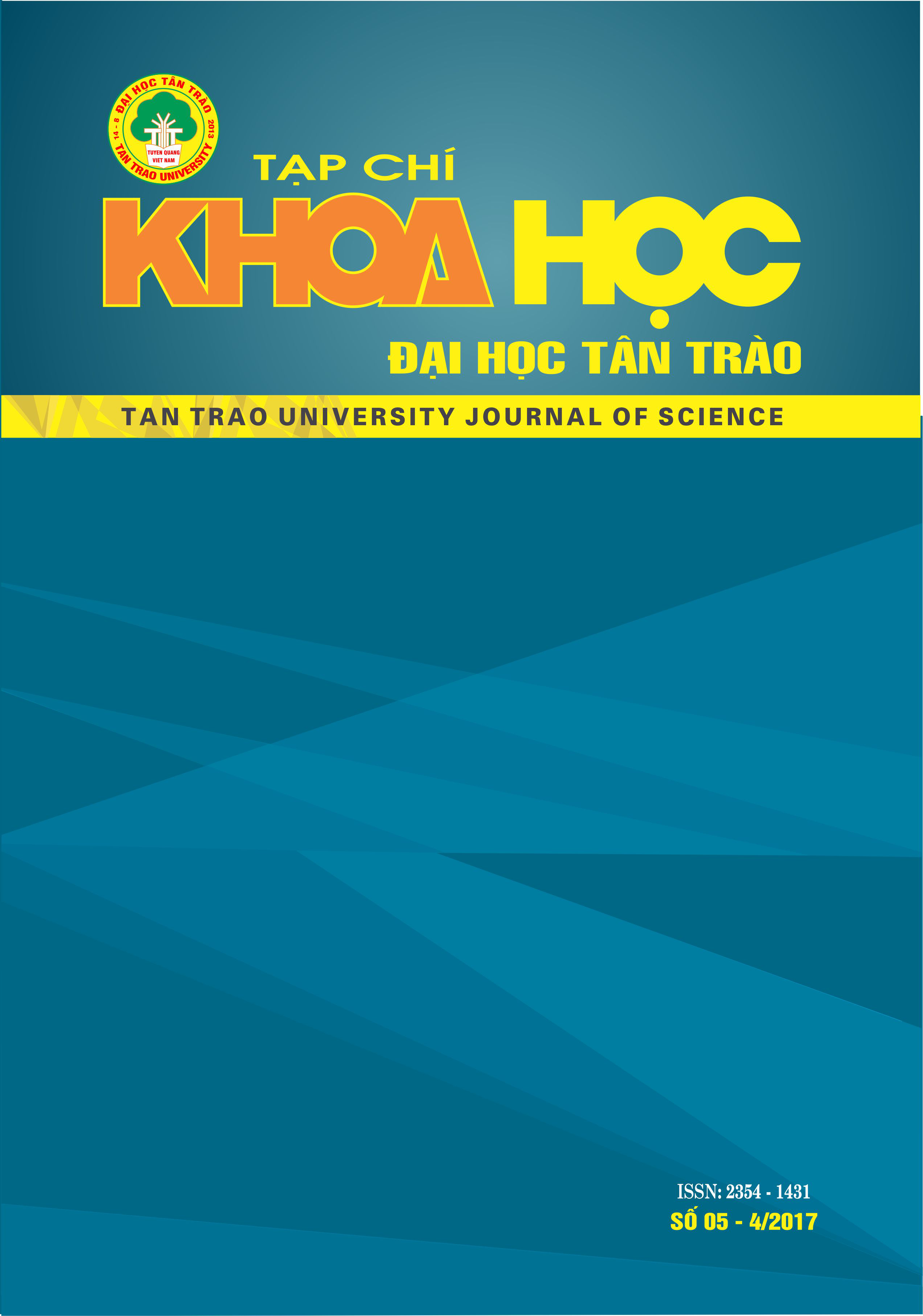ĐÁNH GIÁ MỘT SỐ TÍNH CHẤT CƠ BẢN CỦA ĐẤT BÁN NGẬP THEO CAO TRÌNH NGẬP TẠI KHU VỰC LÒNG HỒ THỦY ĐIỆN SƠN LA
DOI:
https://doi.org/10.51453/2354-1431/2017/89Từ khóa:
Äất bán ngáºp, cao trình ngáºp, tÃnh chất đất, vùng hồ, thủy Ä‘iện SÆ¡n La.Tóm tắt
Kết quả nghiên cứu tại khu vực lòng hồ, cho thấy các tính chất đất có sự khác nhau rõ rệt theo độ sâu của cao trình ngập: Hàm lượng cấp hạt cát: từ cao trình CT1(cao trình MNCN 215m), xuống cao trình CT2 (cao trình 190 - 195m) tăng, từ cao trình CT2 xuống Cao trình CT3 giảm, từ cao trình CT3 (cao trình ngập từ 175 - 190m), xuống cao trình CT4 (Cao trình MNC 175m), tăng, hàm lượng cấp hạt limon: trung bình tại các cao trình nghiên cứu lại ngược lại với các thành phần hạt cát, dao động từ 31,50 - 58,52%. Trong đó ở vị trí lớn nhất là CT3 (cao trình ngập từ 175 - 190m) và thấp nhất ở cao trình CT1. Về hàm lượng cấp hạt sét: trung bình tại các cao trình nghiên cứu dao động từ 19,48 - 29,37%. Trong đó vị trí lớn nhất tại CT1 (cao trình ngập 215m). Cao trình có hàm lượng sét thấp nhất là CT4, Về tính chất đất, ở cao trình CT1(cao trình MNCN 215m), và cao trình (cao trình 190 - 195m), thể hiện tính chất cơ bản là đất chua, nghèo dinh dưỡng, hàm lượng mùn, đạm có xu hướng tích tụ theo độ sâu, cation kiềm, ở mực thấp hơn các cao trình sau, hàm lượng Al3+, tăng dần đến cao trình 190 -195m. Đối với cao trình CT3 (cao trình ngập từ 175 - 190m), và cao trình CT4 (Cao trình MNC 175m), Thể hiện sự lắng đọng chất dinh dưỡng do vậy PH, tăng dần, và các chất dinh dưỡng tăng dần đến mực nước chết, hàm lượng mùn, đạm có xu hướng tích tụ giảm dần theo độ sâu,cation kiềm, giảm dần đến mực nước chết, hàm lượng Al3+, giảm dần.
Tải xuống
Tài liệu tham khảo
1. Bộ Tài nguyên và Môi trường, Cục Bảo vệ Môi trường, Chương trình bảo tồn đa dạng sinh học vùng đất ngập nước sông Mekong (2006), Hệ thống phân loại đất ngập nước Việt Nam, Hà Nội;
2. Đỗ Xuân Đức, (2013). “Kinh nghiệm sử dụng tài nguyên gắn với bảo vệ môi trườngcủa cộng đồng người Thái tại ven hồ thủy điện Sơn La” Tạp chí Khoa học ĐHQGHN, Các Khoa học Trái đất và Môi trường, Tập 29, Số 3 (2013) 26‐34.
3. Quyết định 198/QĐ_TTg, ngày 10 tháng 02 năm 2011. Quyết định về việc ban hành quy trình vận hành liên hồ chứa Sơn La, Hòa Bình, Thác Bà và Tuyên Quang trong mùa lũ hàng năm.
4. Thông tư 03/2012/TT – BTNMT, ngày 12 tháng 04 năm 2012. Quy định việc quản lý, sư dụng đất bán ngập nước lòng hồ thủy điện, thủy lơi;
5. Vũ Trung Tạng, (2004). “Những quan điểm và sự phân loại ĐNN ở Việt Nam”, Tạp chí Khoa học, ĐHQGHN, KHTN&CN. T.X.X, Số 3PT, tr. 58-65;
6. Viện Quy hoạch và Thiết kế Nông nghiệp (2007), Quy hoạch bố trí cơ cấu cây trồng hợp lý vùng bán ngập công trình Thuỷ điện Sơn La, Hà Nội.
Tải xuống
Đã Xuất bản
Cách trích dẫn
Số
Chuyên mục
Giấy phép

Tác phẩm này được cấp phép theo Giấy phép Quốc tế Creative Commons Attribution-ShareAlike 4.0 .
Bài báo được xuất bản ở Tạp chí Khoa học Đại học Tân Trào được cấp phép theo giấy phép Ghi công - Chia sẻ tương tự 4.0 Quốc tế (CC BY-SA). Theo đó, các tác giả khác có thể sao chép, chuyển đổi hay phân phối lại các bài báo này với mục đích hợp pháp trên mọi phương tiện, với điều kiện họ trích dẫn tác giả, Tạp chí Khoa học Đại học Tân Trào và đường link đến bản quyền; nêu rõ các thay đổi đã thực hiện và các nghiên cứu đăng lại được tiến hành theo cùng một bản quyền.
Bản quyền bài báo thuộc về các tác giả, không hạn chế số lượng. Tạp chí Khoa học Tân Trào được cấp giấy phép không độc quyền để xuất bản bài báo với tư cách nhà xuất bản nguồn, kèm theo quyền thương mại để in các bài báo cung cấp cho các thư viện và cá nhân.
Mặc dù các điều khoản của giấy phép CC BY-SA không dành cho các tác giả (với tư cách là người giữ bản quyền của bài báo, họ không bị hạn chế về quyền hạn), khi gửi bài tới Tạp chí Khoa học Đại học Tân Trào, tác giả cần đáp ứng quyền của độc giả, và cần cấp quyền cho bên thứ 3 sử dụng bài báo của họ trong phạm vi của giấy phép.






